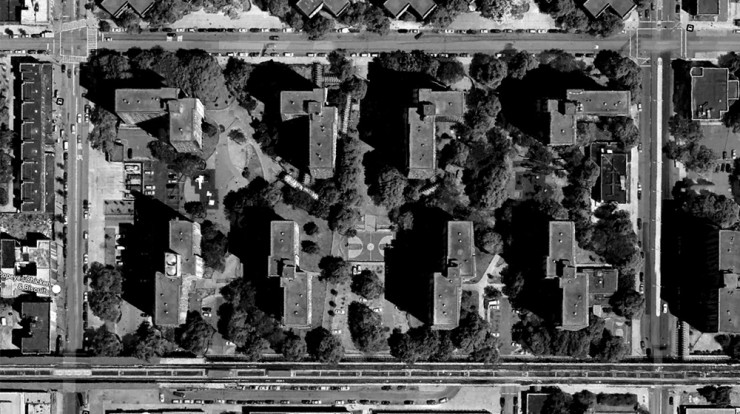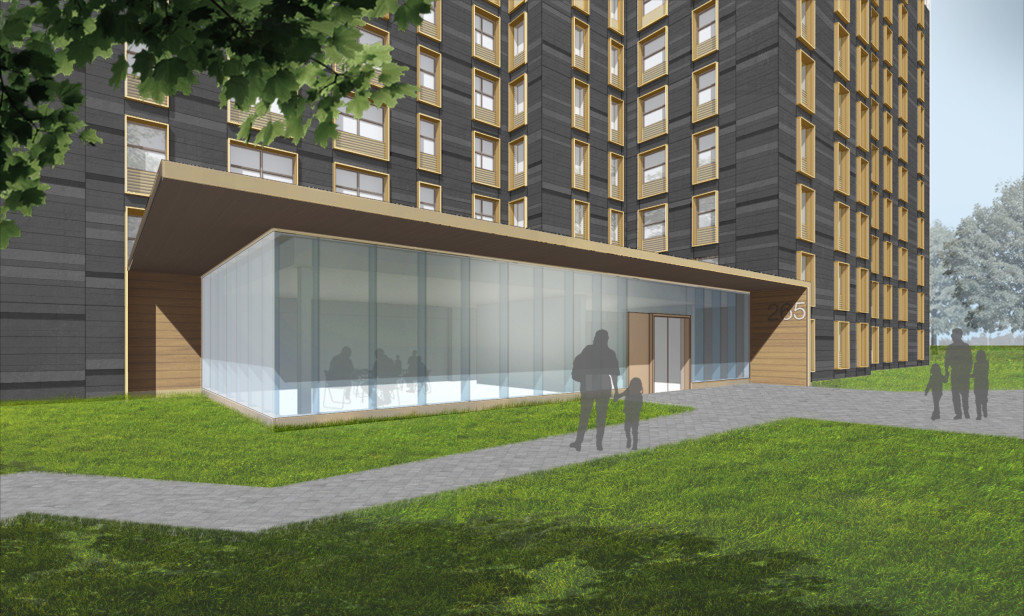

Project Profiles
Tilden Towers Retrofit
Chris Starkey
Share
Learn more about our environmental strategy work and services by emailing us at [email protected]. Follow the conversation on twitter: @TerrapinBG.
Brownsville, a 1.2 square mile section of East Brooklyn, is one of New York City’s most vulnerable communities. By most measures of social progress, the health, safety, and economic prosperity of Brownsville has declined over the last three decades, while most neighborhoods in New York City took significant strides forward in these areas. What one sees in Brownsville, as in other neighborhoods of concentrated poverty, is a lack of “ownership,” a sense of belonging or safety in public spaces, or evidence of pride of place.
Superblocks effectively cut these residential complexes out of the active streets in the urban fabric.”
Also present is the counterexample: concerned citizens, community organizations, and government workers joining together to create a safe and vibrant environment where neighbors support neighbors. Perhaps the biggest challenge to the transformation of Brownsville is the transformation of large public housing communities where poverty and physical and social isolation are most pronounced. One third of the community’s housing stock is managed in 18 New York City Housing Authority (NYCHA) developments. Each development has the feel of an island, the collection forming an archipelago of enclaves of the community’s poorest families. This income-based segregation is reinforced by the physical form of public housing developments that cut off streets to combine multiple blocks into a single “superblock,” pulling buildings off the frontage and eliminating ground floor retail. Superblocks effectively cut these residential complexes out of the active streets in the urban fabric.

Proposed new entryways at the base of each retrofitted tower would provide safe shared community space for residents.
To address these issues in Brownsville and beyond, Community Solutions and Terrapin Bright Green, with assistance from Forsyth Street, Atelier Ten, WE Design, Sciame Construction, NYCHA, and Tilden residents, developed a proposal for increasing community resilience. The proposal focused on the Tilden Houses, a prototypical vulnerable public housing superblock located in the heart of Brownsville. To eliminate the conditions that perpetuate poverty in Brownsville, the plan prioritized remaking the public housing, reconnecting it to the neighborhood, activating streets and enlivening landscapes, repairing buildings and improving living conditions, and reintegrating low-income families into diverse-income communities. The team led workshops with residents to identify current issues and potential retrofit options for the Tilden Houses. From these meetings, the team developed specific recommendations, including:
- Renovating the existing NYCHA units to be healthier, more comfortable, and more sustainable without displacing current residents.
- Constructing new, affordable units at a range of income levels, designed for single-person households and larger families, all sustainably designed.
- Providing new retail, commercial, and community facility space within the block.
- Reducing site-wide energy use to mitigate greenhouse gas emissions and decrease energy costs.
- Improving social resiliency with a mixed income community and robust services.
- Increasing employment in Brownsville with retail and construction activity.
- Improving infrastructure resilience by integrating an onsite cogeneration facility to reduce strain on the existing energy infrastructure, and landscaping to mitigate stormwater events.
- Upgrading landscaping and amenities to improve quality of life and pride of place.
Currently, NYCHA houses over 600,000 residents, making it equal in population to the cities of Boston and Seattle.”
This proposal outlined a pathway for reshaping one of the most challenged public housing developments in New York City and, in so doing, could become a model for the redevelopment of public housing developments throughout New York City and the country. Currently, NYCHA houses over 600,000 residents, making it equal in population to the cities of Boston and Seattle. Improvements similar to the ones recommended in the Tilden Houses proposal have the potential to change the landscape of public housing in New York, improve the daily lives of hundreds of thousands of citizens, dramatically reduce the city’s environmental footprint, and increase the resiliency of neighborhoods.
Filed under:
Chris Starkey
Chris is a senior project manager and researcher at Terrapin. He has a multi-disciplinary background, combining the skills of an architect with knowledge from the environmental sciences. In addition to his work on green buildings, waste, energy, and food systems, Chris teaches and writes about ecological design.
Topics
- Occupant Comfort
- Materials Science
- Speaking
- LEED
- Terrapin Team
- Phoebe
- Community Development
- Greenbuild
- Technology
- Biophilic Design Interactive
- Catie Ryan
- Spanish
- Hebrew
- French
- Portuguese
- Publications
- Carbon Neutrality
- Environmental Values
- Conference
- Psychoacoustics
- Education
- Workshop
- Mass Timber
- Transit
- Carbon Strategy
- connection with natural materials
- interior design
- inspirational hero
- biophilia
- economics of biophilia
- Sustainability
- Systems Integration
- Biophilic Design
- Commercial
- Net Zero
- Resorts & Hospitality
- Energy Utilization
- Water Management
- Corporations and Institutions
- Institutional
- Ecosystem Science
- Green Guidelines
- Profitability
- Climate Resiliency
- Health & Wellbeing
- Indoor Environmental Quality
- Building Performance
- Bioinspired Innovation
- Biodiversity
- Residential
- Master Planning
- Architects and Designers
- Developers and Building Owners
- Governments and NGOs
- Urban Design
- Product Development
- Original Research
- Manufacturing
- Industrial Ecology
- Resource Management
- Sustainability Plans
- Health Care


